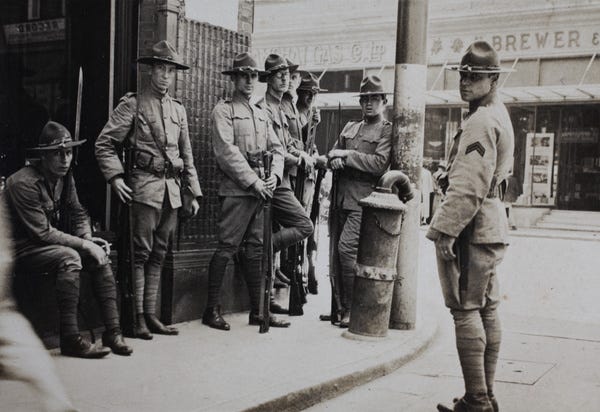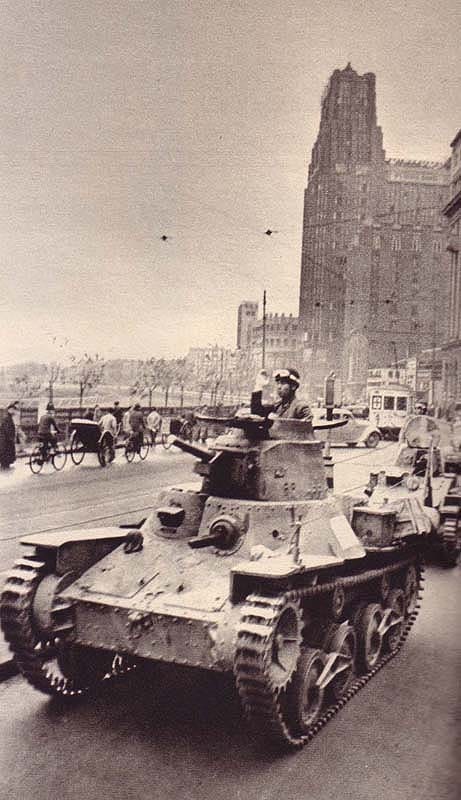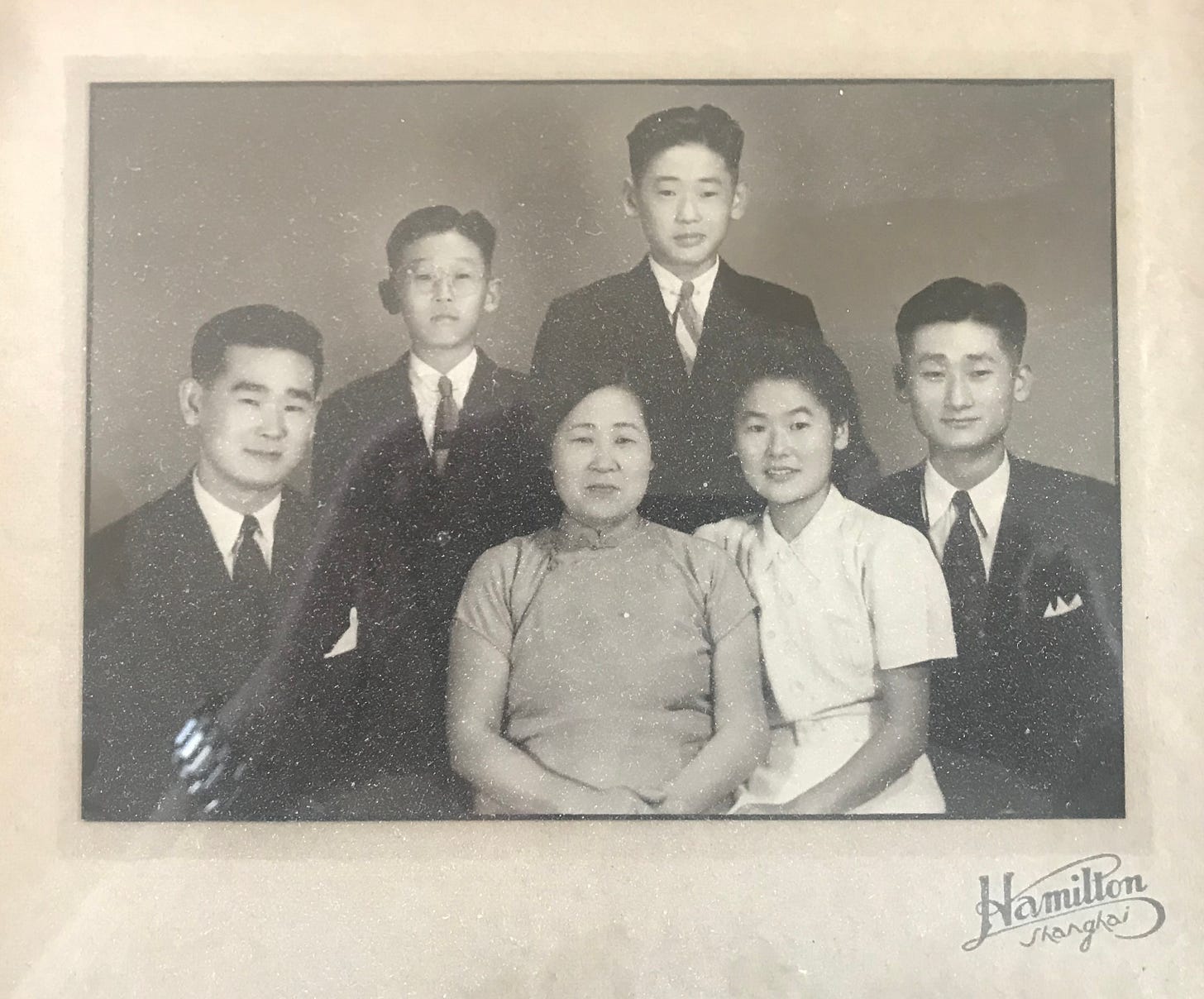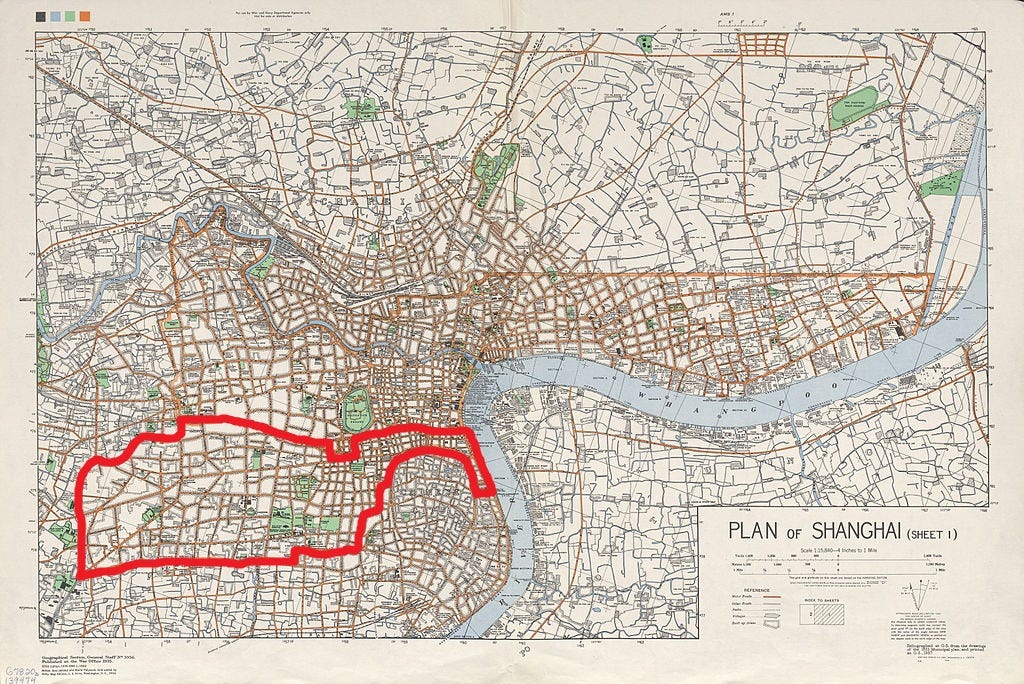
Kim Chang Sei’s suicide in New York in March 1934 left his widow and six children stranded in Shanghai. Their seemingly imminent return to America after eight years had vanished. Their father’s tragic end left them with nothing that they could do but continue building lives for themselves on the fringe of the American community in Shanghai.
In their home in Shanghai’s French Concession, Lee Chung Sil continued to raise her children as Americans. Eldest son Peter, 21 years old in 1934 and accustomed to working to support the family since his father left in 1930, became the main family breadwinner as an employee of American companies in Shanghai. His younger brother David worked for American-owned businesses as well.

Peter and David also served in the American Company of the Shanghai Volunteer Corps, the multi-national paramilitary force that guarded the Shanghai International Settlement. Recruited from American civilians living in Shanghai, the unit gave the Kim brothers their first experience serving in an American military organization. By 1937, Peter was a sergeant in the American Company, and David was a corporal.
The Shanghai Volunteer Corps guarded the perimeter of the Shanghai International Settlement when the Imperial Japanese Army and Navy attacked and occupied the Chinese-governed parts of the city in August 1937, in the opening move of the Japanese invasion of China that would lead to war between Japan and the United States in December 1941.
The outbreak of war forced Lee Chung Sil to make the difficult decision to send away her children who had been born U.S. citizens—James and Betty—to safety in the United States. The U.S. Department of State urged all American citizens in China to leave the country immediately and sent ships to Shanghai to evacuate them. Sergeant Peter Kim took 16-year-old James and 14-year-old Betty to the SS President Hoover, a passenger liner chartered as an evacuation ship. James and Betty went to Los Angeles to live with their aunt, the widow of Ahn Chang Ho.
Life in the foreign quarters of Shanghai resumed a degree of normalcy after 1937, as did the lives of the Kim family. Peter and David went back to work, and Richard and Arthur returned to school, with Richard attending the exclusive Shanghai American School as a high school freshman in 1941. Betty even returned in 1939, disliking living with her relatives in Los Angeles and wanting to help to take care of their mother, whose difficult life had rapidly aged her by her late forties.

On December 7, 1941, everything changed. On the day that the Imperial Japanese Navy attacked the U.S. Pacific Fleet in Pearl Harbor, the Imperial Japanese Army marched into Shanghai’s International Settlement. The era of western domination of Shanghai had ended, and the city’s Americans, British, and other foreigners were now conquered people.

Defeat and occupation would test the loyalty and resolve of every foreigner in Shanghai, and the test would be especially severe for the sons of Kim Chang Sei and Lee Chung Sil. Americans by upbringing and in identity, they were Asian subjects to the Japanese. The United States did not recognize them as Americans, and whether the war ended in victory or defeat, they could expect nothing from the distant country that they considered to be theirs. The Japanese, their lifelong enemies, were now the enemy of the United States as well, but there was no apparent way to fight back while isolated deep within the Empire of Japan. They would have to find a way in the years of war to come.
This series previews my upcoming book Victory in Shanghai: A Korean American Family’s Journey to the CIA and the Army Special Forces, whose publication is expected by June 1, 2025. You can pre-order it now through Potomac Books, an imprint of the University of Nebraska Press, at this link, or through your favorite local independent bookseller.
Subscription to this series is free.
If you know anyone who may be interested in this series, please share it with them.






